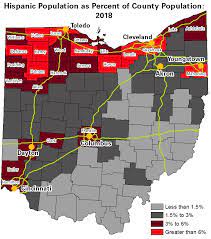
(Eugene Garcia / Associated Press)
Illegal Migrants crossing the U.S.-Mexico border are now being offered “credible fear hearings” by asylum officers as part of a new initiative put in place by the Biden administration. This program provides migrants proper access to legal counsel and requires asylum officers to be present instead of border patrol agents (who had previously conducted screenings under the Trump Administration). Notably, asylum officers are much more experienced with conducting hearings and even informed of the rules and regulations. Prior to the new expedited screenings, international laws put in place to halt the spread of COVID 19 (including Title 42) had caused screenings, interviews and transportation for migrants to become an incredibly lengthy process–sometimes lasting 8-9 weeks for a certain group/individual. Now, U.S. customs and border control facilities are equipped with phone lines and other technological advances that will be used to process hearings–limiting migrant detention to just 72 hours. By investing in the right equipment and utilizing officials with experience, Homeland Security will be able to manage a drastic increase of illegal entries following the expiration of Title 42.
In this article, Los Angeles Times authors Rebecca Santana and Elliot Spagat provide insight to new accommodations being provided to illegal migrants crossing the border. The journalists provide a consistent and neutral tone throughout the even in comparing the methodology of past and present administrations (which can be difficult). Although the article doesn’t go too in depth with its analysis of the potential implications of the new screenings, it does do a good job of explaining how the new process differs from previous ones.
The quantitative evidence provided in this article is primarily used to emphasize the effectiveness of the new screenings/hearings. For example, in comparing past processes introduced during the Trump Administration, the author states how CBP facilities could take up to “4 weeks to conduct a screening interview”. This number is then contrasted with times of the newly updated system–which can take as little as “72 hours”. Quantitative data within this article follows basic OLW guidelines and is properly introduced with context and lets the reader interpret the data on their own. The authors also chose to include data estimates such as “illegal entries from Mexico could rise to 13,000 a day after Title 42 expires” in order to illustrate the broader picture and explain the need for the updated screenings. Other quantitative examples included success rates of the screenings (%).
The authors chose not to include a lot of qualitative evidence within the article likely because the screenings are still in the testing stages and there are not too many documents or descriptions to reference. The article does include a photograph though and a quote from Homeland security regarding the previously “broken immigration system”. I think this quote is particularly valuable to the article as it is the only offering of a perspective or opinion on the new screenings. Perhaps they could have interviewed a migrant or asylum officer to give their writing a bit more substance/perspective.
Overall, I think that the authors use of quantitative and qualitative evidence was beneficial to explaining the advantages of the new screening system. They did not try to project any particular viewpoint on the reader and stayed consistent with their tone throughout the article. I think it could have been helpful to provide more qualitative evidence or even information from a primary source–like an interview. However, I think given the recency of the event, their level of information was appropriate.
Source:
Santana, Rebecca, and Elliot Spagat . “U.S. to Test Expedited Asylum Screenings at Mexico Border.” Los Angeles Times, Los Angeles Times, 7 Apr. 2023, www.latimes.com/world-nation/story/2023-04-07/us-to-test-expedited-asylum-screenings-at-mexico-border.
